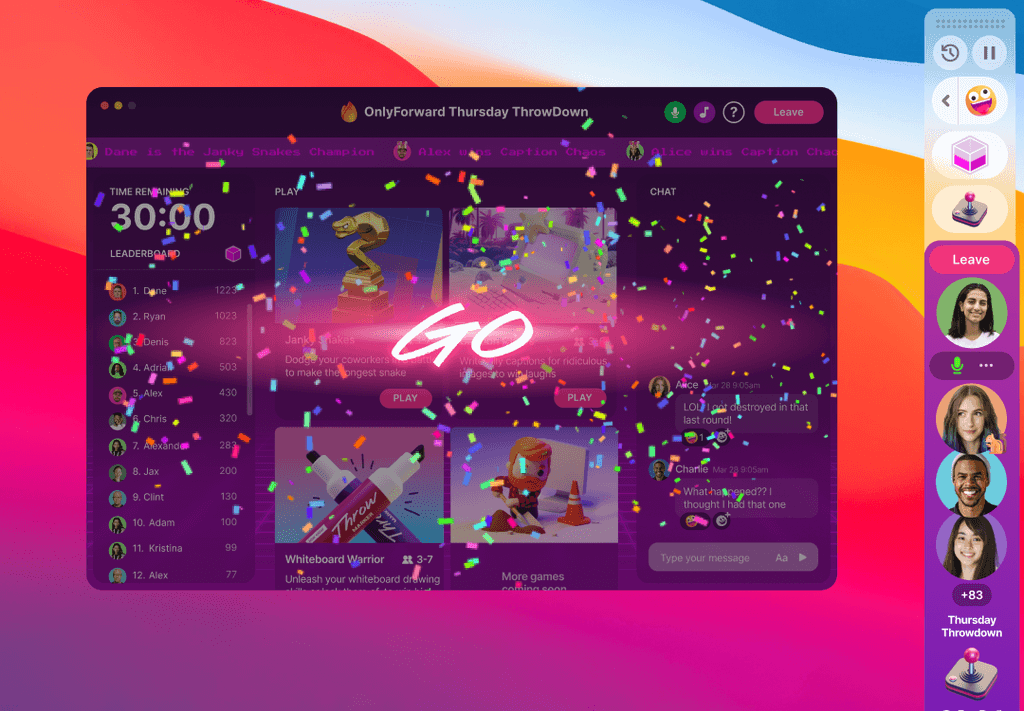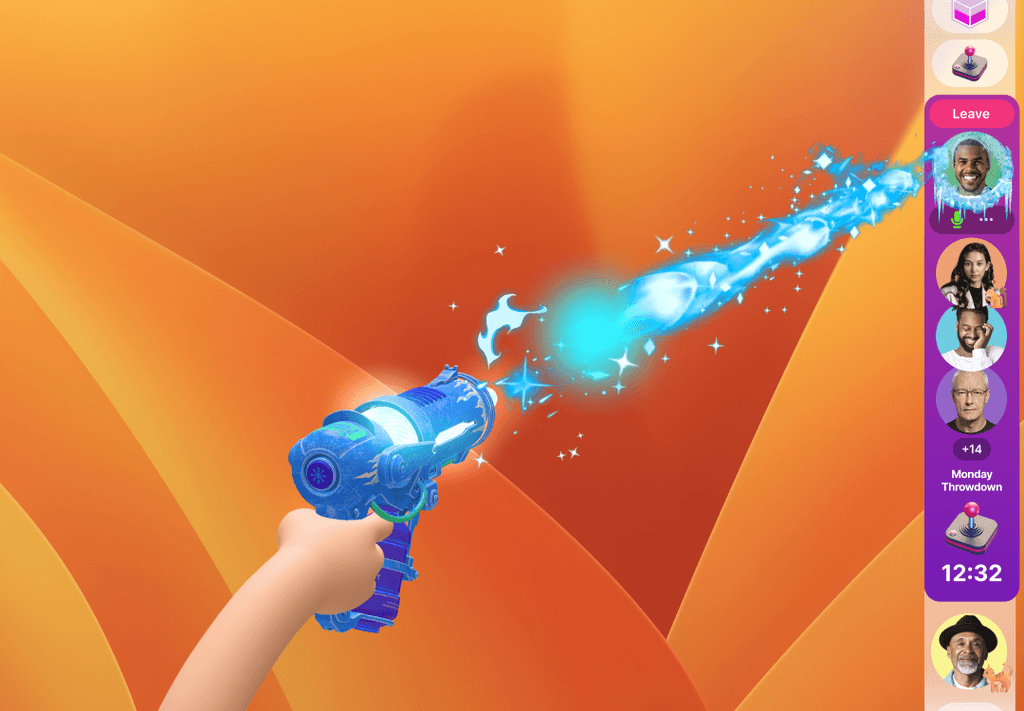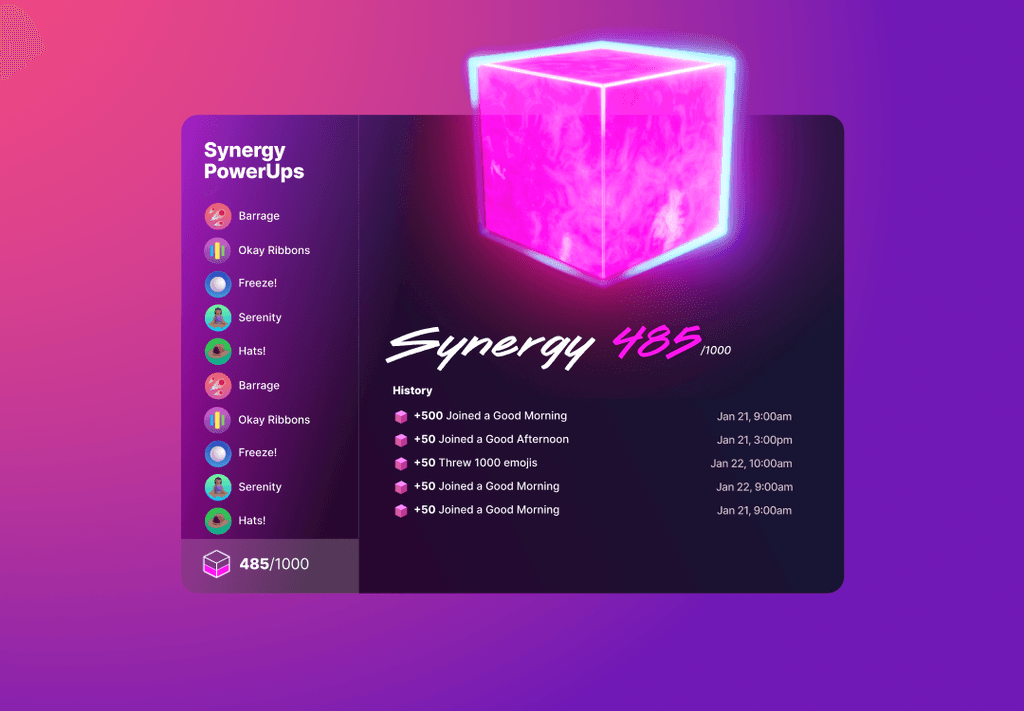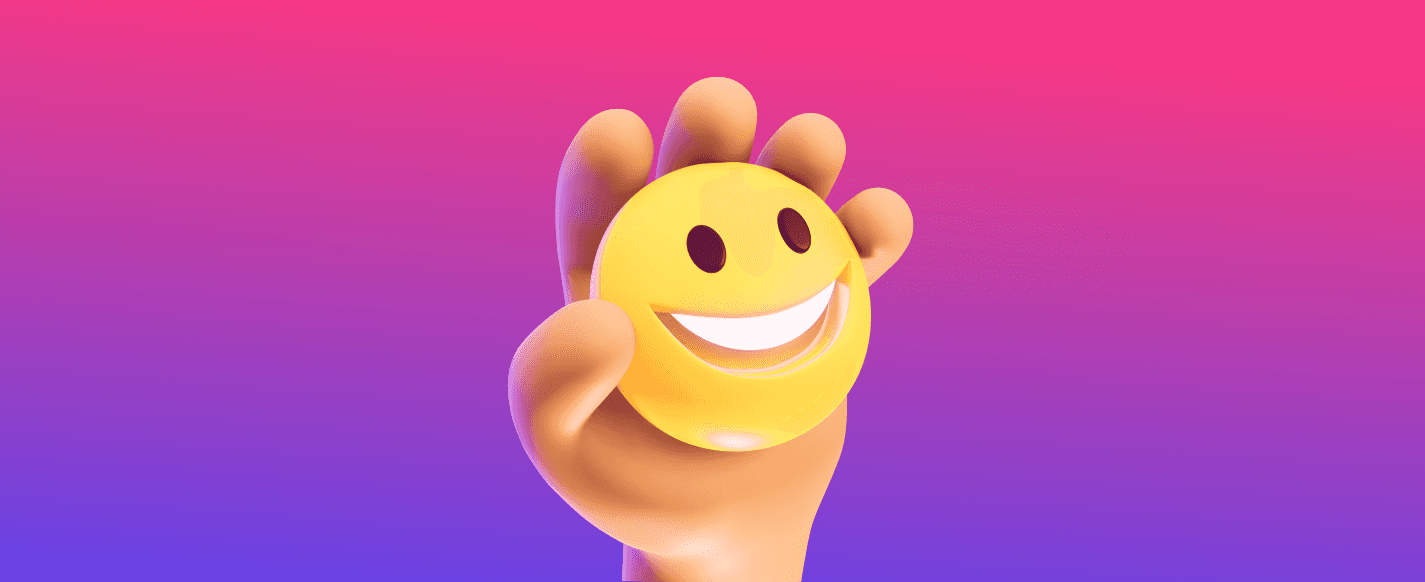


Throw for Mac
By John Robinson | June 7, 2024
calendar_month
Built in March 2024
schedule
1 Year
build_circle
AppKit, SwiftUI, SpriteKit, SceneKit, Phoenix, Elixir, Websockets
AppKit, SwiftUI, SpriteKit, SceneKit, Phoenix, Elixir, Websockets
The idea
Throw was designed to help remote teams to feel more connected. Teams used Throw to turn all hands, status meetings and social hours into events that were fun and engaging to attend. You could call, chat and screen share, but also have some fun with mini-games, gamification and emoji throwing.
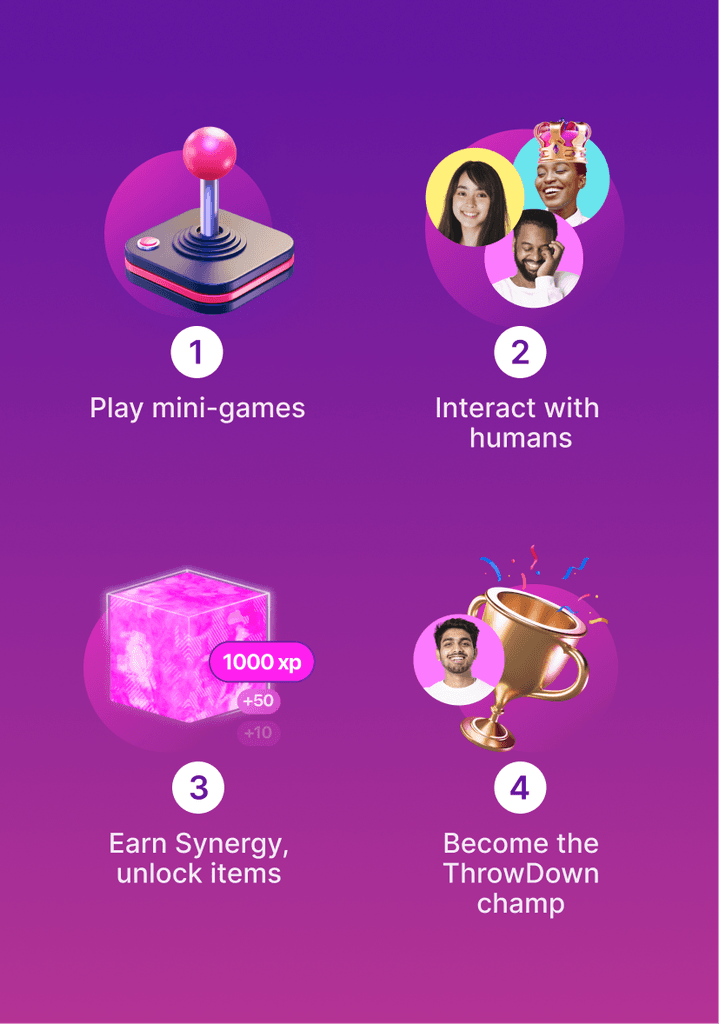

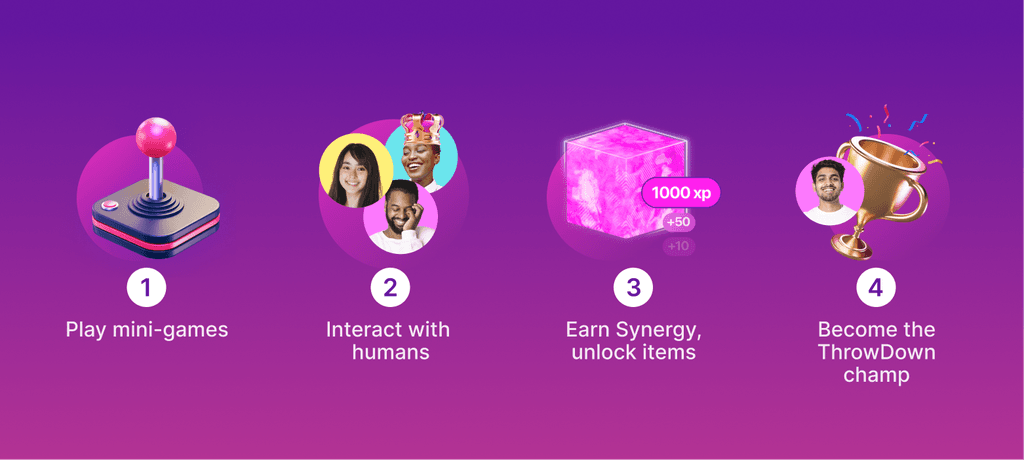

Why this idea?
From our exploratory research, we uncovered a theme while talking to founders, managers and People Ops leaders; their teams were struggling to build a sense of camaraderie while working remotely.
Our hypothesis was that top performing teams build trust not only through work but also by developing informal relationships, but these conversations weren’t happening on remote teams. With Throw, we set out to help remote teams develop the relationships and trust that in-person teams naturally build.
Our experimentation followed a 3-month research, recruit and test cycle. We’d talk to teams, build and roll out a new build hypothesis, then collect the data and iterate every quarter.
Our test cycles included the launch of:
Chat, conferencing and screen share functionality
Good morning - quick chats with coworkers that respected social boundaries
Emoji throwing - quick laughs for teams to say hi without talking
Gamification - unlock silly things like a freezeray by being social
Mini-games - play simple games while hanging out
Social events - organized 30 minute events
We’ll be doing deep dives on each of these test cycles in future posts.
How it works:
Download the app and join your team
Use Throw to call, chat and screen share
Join social moments like good morning, emoji throwing and mini-games
Earn points that unlock mischievous new powers
Unleash your powers on your co-workers
What we learned:
Our customer interviews validated that many people felt that isolation is an issue with remote work. However, we discovered that the desire to socialize with coworkers varies greatly based on demographics and life stage. In general, younger testers were open to social time, while older testers were actively against it.
After building Throw, it’s unclear whether this is a problem that can or should be solved by companies and it may be better solved by individual employees changing their work habits.
Here’s what we learned about building a social tool for remote teams:
Social norms from remote working meant employees often felt weird about having fun while being remote.
A surprisingly large number of people (particularly from large companies) just didn’t like their coworkers and didn’t want to socialize at all. We heard a lot of “I’m just here to get my work done, and go home”.
Dedicating time during the day to interact with their own friends outside of work was a preferred solution to the isolation problem, rather than more social time with remote coworkers.
Experimenting with work social dynamics is really hard. Despite our best attempts we couldn’t make it feel intuitive to schedule a few minutes of games or social time with teams.
Social products need to support all platforms, even for a Beta - otherwise people are going to feel left out (e.g. a 50 person startup where 45 people are on macOS, but the few Linux and PC users would be excluded).
Use cases need to be clearer. Despite focusing on fun and social, testers weren’t convinced that they needed another app with similar base functionality to Slack / Zoom / Meet. “It’s fun but…”
Even if you validate a problem for your buyers (in our case managers and People Ops), if it’s not a problem for the end user, you’re going to have trouble with adoption. Both groups need to have a painful problem to solve.
As a remote team ourselves, we had previously tried lots of things to build our own remote culture. We felt like we could build social activities that worked better for startups. Something that was fun without that awkward “required work fun” vibe.
In the early days, we had trouble positioning what we were doing but it seemed to click when we described it as a team social activity. A desktop app wasn’t the right tool to solve this problem, so we took some of the core elements of Throw and re-launched it as a web app.
